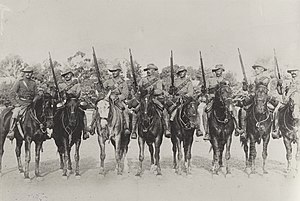Editor’s Introductory Note: This article was authored by Brandon Smith of Alt-Market.us and was originally published at Birch Gold Group.
—
Historically speaking, inflation/stagflation has always been a disastrous affair. One is hard-pressed to find any legitimate examples of a country that experienced an aggressive inflationary event that came out better for it. A rare scenario would be one in which a nation inflates to fund a war that they then win, but usually negative consequences still happen later down the road.
The problem is that the effects of inflation can be subtle and far-reaching, quietly creeping up on a population until suddenly there’s a tidal wave of societal crises. In the US (and much of the Western world) we are already witnessing elements of inflationary disaster; there’s a good reason why around 60% of Americans now have a pessimistic view of the future, with a majority of people saying life is worse for them today than it was in the past.
These kinds of dark sentiments usually coincide with inflationary or deflationary pressures. Inflation in particular can be devastating because it represents an ever-expanding hidden tax on the life of each citizen. Not only that, but the cure is often worse than the disease, with central banks instituting interest rate hikes that continue longer than most people expect. Eventually, they lead to an engineered deflationary kick in the gut for the economy. For a time, prices will remain high on an array of necessities while wages stagnate, consumer demand shrinks and businesses go bankrupt as borrowing becomes impossible.
A system might be able to absorb this shock as long as it is not burdened with immense debt. In the case of the US, we are heavily burdened with over $33 trillion in national debt (officially) and over $17 trillion in consumer debt. The damage from stagflation and the central bank response will be greatly amplified by this.
So what should we expect when things go truly bad?
Widespread Labor Strikes
Labor strikes tend to occur in inflationary environments because, at least initially, demand for labor is high, giving labor more leverage against business owners. When people know they can easily jump into another job tomorrow the temptation is to leave their current job at the drop of a hat today.
Strikes were a common crisis in Weimar, Germany, and Yugoslavia among other nations, in some cases because of legitimate labor concerns and in other cases because of communist provocateurs. The stagflation of the 1970s led to what is known as the “decade of strikes” in the US, with labor seeking higher wages to offset rising prices. The strikes sometimes resulted in better wages, which then in turn only lead to even higher prices as production shrinks and the costs are transferred to the consumer.
Wages are stagnant in the US today, even after the minimum wage unofficially doubled due to labor shortages. Labor demand is high (for now), but the difference in our era compared to previous inflation events is that the vast majority of labor is focused on superfluous markets. It’s not as if manufacturing is a major component of the US economy anymore. Rather, most employment is in the service sector.
No one really cares if Mcdonald’s workers or Walmart workers or Hollywood writers go on strike. This does little to affect their daily lives. What it does do, though, is wear down the business sector over time until a portion of employers eventually downsize operations. If you have enough strikes and businesses can’t find workers in certain regions, they will close up shop and cut their losses. There were multiple incentives for major manufacturers to leave the US for places like China in the 1970s and 1980s, but the constant union strikes during that period played a large part in the decision.
Today, you will have retail and food deserts; places where no businesses will dare set down roots because they can’t keep their stores staffed. In the end, the jobs disappear entirely.
Rising Crime And Government Lies
Speaking of retail deserts, spiking crime rates are another factor that drives employers away from certain neighborhoods and cities.
Obviously, this is a situation we are seeing play out in the past couple of years, but the interesting thing is the level of disinformation and denial that public officials have displayed in response. There has been a conspiracy among certain state and local governments (Democrats) and the corporate media to dismiss or hide the rising crime problem in the US. The most important aspect of this has been the oddly timed overhaul for the process US cities use to report crime stats to the FBI and to the public.
It’s just a coincidence I’m sure, but starting around the beginning of the covid pandemic there was a shift in procedures for criminal data reporting within the federal government. That change has allowed a number of cities to withhold complete crime stats until the new system is finished; this means that some cities will not be reporting reliable stats until 2024-2025.
So, when a leftist journalist says “Gee, conservatives keep complaining about rising crime in San Francisco, but crime is actually going down…” this is a lie. Cities like San Francisco are simply not required to provide full criminal reports for another year.
The crime rate is not only a symptom of high prices. That is a part of it, but the atmosphere of chaos that surrounds inflation also acts as a kind of signal to the mentally unstable and morally corrupt. Bad people will slither out of the woodwork because they view the instability as good cover for their criminal activities. With enough crime overwhelming police, a larger percentage of miscreants are likely to escape scrutiny and prosecution.
More Looting
Again, this is happening right now, but it is generally limited to short bursts in compact urban settings. As inflationary heat boils over, looting will become a daily occurrence and it will move away from retail areas into residential and suburban areas.
The fascinating thing about looting these days is that if you have one man stealing from a store, he is considered a criminal. If you have a group of people stealing from a store, suddenly they become “activists” that are fulfilling their “right to reparations.” There is a political weaponization of looters going on, usually on the side of the far left, in the midst of inflation. The looters are not looting because prices are higher and they need the resources, they are looting because inflation gives them an excuse to loot and political elements are encouraging them to do so.
Population Migrations
Inflationary effects can move awkwardly through an economy, with some places far more damaged than others depending on how local governments respond. The worst governments will react with higher taxes and red tape in order to offset falling revenues in other areas. They will also reduce public services in order to save money, and this includes reductions in police funding even in the face of higher crime.
As people realize they’re living in a dead zone that is draining their bank accounts dry and giving them nothing back, they will try to leave if they can. In the US, people have migrated by the millions away from blue states in the past few years, but this was more to do with them escaping covid mandates and lockdowns than escaping economic malaise. The next wave of migrations will happen because of financial decline (as well as the crime that comes with it).
This happens during most economic crisis events. It was common during the Great Depression to see Americans moving around like nomads to places they thought had more work and more prosperity. Men would leave their families for jobs across the country so they could send money back home. The homeless spread out from urban areas into the countryside to beg for food from farmers.
During inflation, the cost of relocation can be debilitating. There will come a point when moving will be impossible. Until then there will be a swell of populations flowing like water from one place to the next seeking relief from the storm. Expect to see nomadic cultures return to the US with RV caravans, tiny home meccas, tent cities and Hoovervilles (now called Bidenvilles).
Balkanization
In the former Yugoslavia, economic disaster accelerated existing social and political divisions to the point of national breakup. These kinds of conditions might be a ways down the road for the US, or, they might be a lot closer than you think. In our case, the divisions will be between the people who want to continue going down the path that is taking us to oblivion, and the people who want to stop and reverse course.
It might seem like insanity, but a large part of the American populace still thinks the direction we are going is beneficial. They think the destruction of western culture is part of the greater good, that economic calamity is a means to an end and that they will be largely unaffected. There are also people that are just plain stupid and don’t realize that they’re supporting policies that will end up biting them in the posterior.
Inflation creates chaos, but it can also bring clarity. That which is truly important moves to the forefront of the public consciousness. The depraved rise to the surface of the water like so much putrid ocean froth, and people figure out quickly who they want to live with and who they want to live without. Entire subcultures will form and separate to survive and thrive while other groups will try to stop them. Conflict is probably inevitable (as it was in Yugoslavia) but the point remains: Inflationary crisis has the ability to change everything.
—
About The Author: Brandon Smith is the editor of both the highly recommended Alt-Market.us blog and The Wild Bunch Dispatch newsletter.














